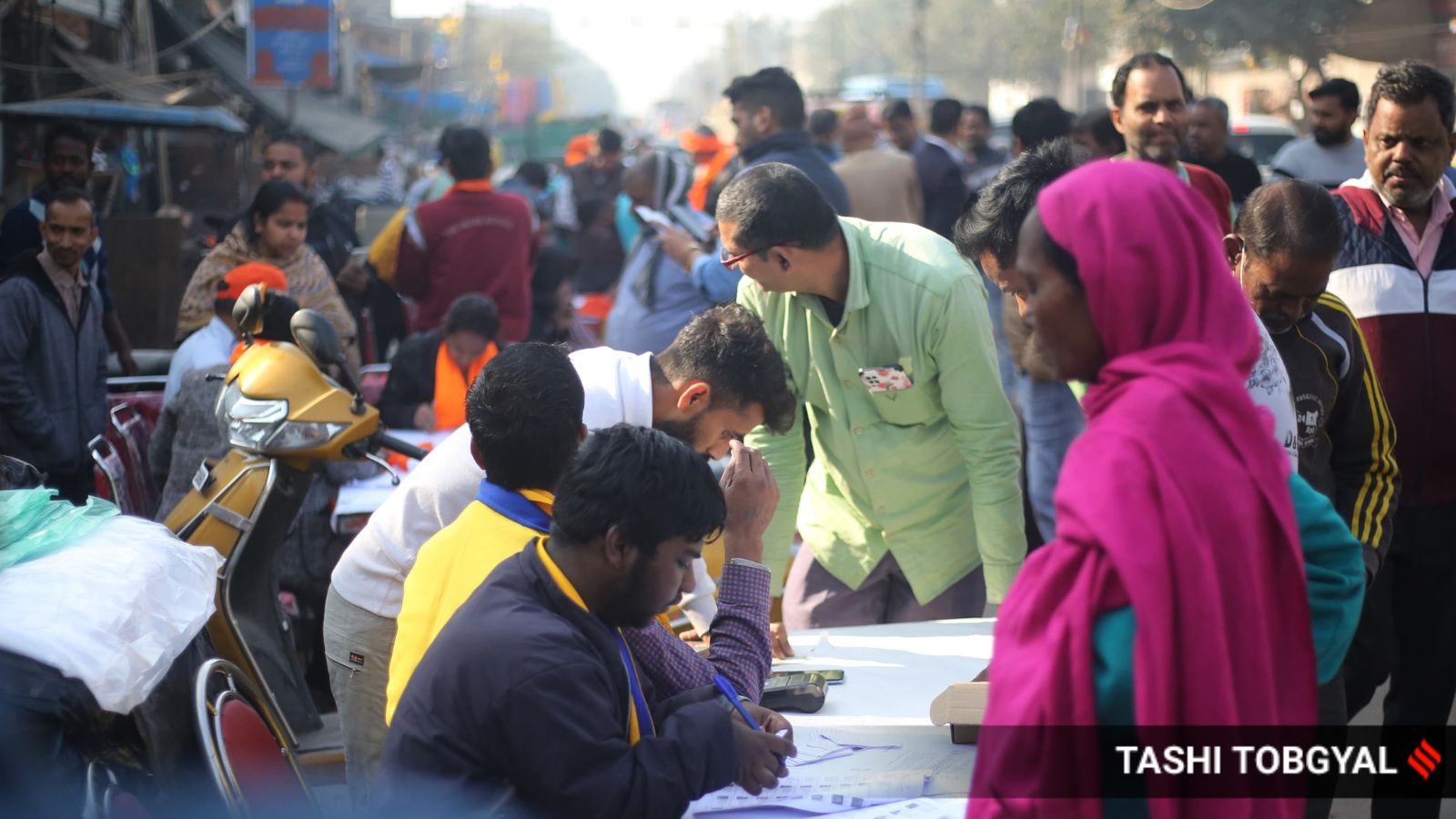 |
|
The Delhi Assembly elections have consistently posed a challenge to exit poll accuracy, particularly concerning the Aam Aadmi Party (AAP)'s overwhelming victories. This analysis examines the performance of exit polls in the 2013, 2015, and 2020 Delhi Assembly elections, revealing a recurring pattern of underestimating the AAP's strength and overestimating the performance of the Bharatiya Janata Party (BJP). The discrepancies highlight the limitations of predictive models in capturing the complex dynamics of Indian electoral politics, particularly when confronted with the rise of a new, disruptive political force like the AAP.
In 2013, the debut election year for the AAP, an average of four exit polls projected a BJP victory, falling short of predicting the actual outcome by a significant margin. While they correctly identified a hung assembly, they severely underestimated the AAP's potential. The polls collectively assigned the AAP approximately 17 seats, far below its actual 28. This underestimation is particularly significant given the AAP's nascent status and its successful leveraging of the India Against Corruption movement to mobilize public support. The BJP's projected strength was also misleading, with polls overestimating its seat count by a significant number. Even the most accurate poll, Today's Chanakya, still missed the AAP's performance by a few seats. This initial failure laid the groundwork for subsequent miscalculations.
The 2015 Delhi Assembly elections witnessed a similar pattern, albeit with a heightened level of inaccuracy. While the six exit polls analyzed did correctly predict an AAP majority, none managed to anticipate the scale of its victory. The average prediction assigned the AAP 45 seats, significantly lower than the actual 67 seats they secured, representing a gap of 22 seats. The BJP's projected performance was also off the mark, with exit polls largely overestimating the number of seats they would win. The starkest discrepancy was observed in the Congress's performance; all exit polls accurately predicted their failure to win any seats. The significant deviation between predicted and actual results in 2015 further underscores the limitations of the methodology employed by the exit polls in capturing the nuances of public sentiment and voting patterns.
The 2020 Delhi Assembly elections saw a slight improvement in the accuracy of exit polls, but the inherent bias against accurately predicting the extent of the AAP's dominance persisted. An average of eight exit polls predicted an AAP victory, though they again underestimated the party's success by eight seats. Similar to the previous elections, the BJP's performance was overestimated, signifying a consistent trend of overconfidence in the party's prospects. While several polls came closer to accurately predicting the seat shares of both the AAP and BJP compared to the previous elections, the overall pattern remained consistent: an underestimation of the AAP’s electoral might. While individual polls such as India Today-Axis My India demonstrated improved accuracy, offering a narrower range encompassing the actual result, the overall average prediction failed to capture the AAP’s decisive win.
The consistent underestimation of the AAP's electoral performance across three consecutive Delhi Assembly elections raises questions about the methodologies employed by exit polls and their ability to account for factors like grassroots mobilization, the impact of localized narratives, and the influence of newly formed political entities. The reliance on sampling methods, limited consideration of contextual factors, and possible inherent biases might contribute to these inaccuracies. The findings highlight the need for refinements in exit poll methodology to account for the rapid shifts in the political landscape and the unpredictable nature of electoral outcomes, especially in the context of rising new political parties and significant changes in public sentiment.
Furthermore, the consistent overestimation of the BJP's performance across these elections suggests potential biases in the polling methodology or interpretations. These could be influenced by historical voting patterns, media narratives, or other factors influencing the respondents. The lack of accurate predictions across different methodologies underscores the importance of critically analyzing exit poll data, recognizing their limitations, and interpreting the findings with caution. Exit polls should be viewed as indicators, not definitive predictions, offering insights into potential trends rather than conclusive statements about election outcomes.
In conclusion, the analysis of Delhi Assembly election exit polls from 2013, 2015, and 2020 reveals a persistent inability to accurately predict the extent of AAP's electoral dominance. While some improvements in accuracy were observed in 2020, the consistent trend of underestimating AAP's performance and overestimating BJP's prospects indicates significant limitations in the methodologies used. These limitations highlight the need for continued research and improvements in polling techniques to better capture the complexities of the Indian electoral landscape and provide more accurate predictions in future elections. The findings emphasize the importance of considering the limitations of exit polls and treating their results with critical assessment rather than absolute certainty.
Source: Delhi exit polls later today: What the surveys predicted in 2015, 2020
